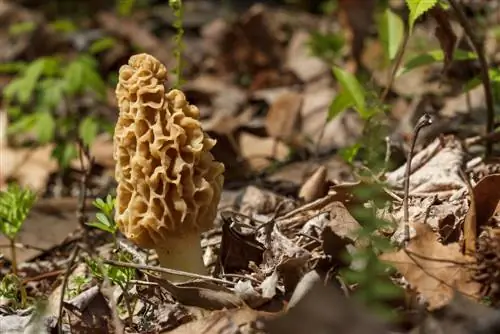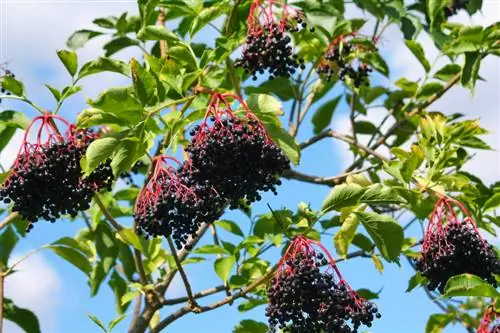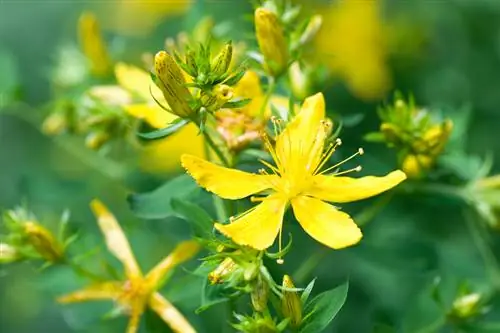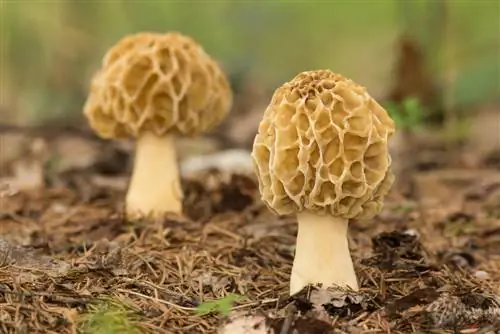- Author admin [email protected].
- Public 2023-12-16 16:46.
- Last modified 2025-01-23 11:21.
In some areas there is a real competition for the best morel spots in spring. Almost as sought after by gourmets as the legendary Perigord truffle, the morel is an absolute highlight not only in gourmet cuisine. But be careful! The morels have inedible, sometimes even very poisonous counterparts: the lorels.
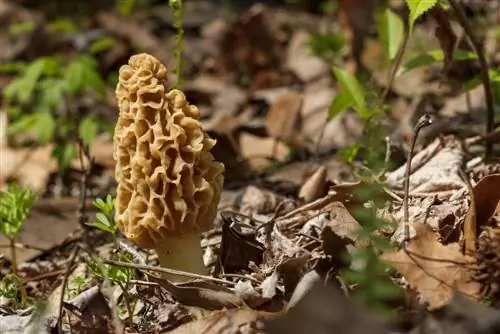
Where can I find morels in nature?
To find morels, look near forests near streams and river floodplains, especially under alder and ash trees. Black morels are often found in the bark mulch of front gardens, coniferous forests, forest meadows or forest edges near bracken.
This is where you have to look
Stream and river floodplains surrounded by forest are the optimal locations for the tasty morels. To the left and right of the water, mainly under alder and ash trees, the morel grows well hidden in the green undergrowth. The sought-after mushroom can often be found as early as April. However, the closely related pointed morel is much more common and much easier to find. It often grows in the bark mulch of front gardens as well as in coniferous forests, on forest meadows and on the edges of forests. The black morel is often found near bracken.
Which morel species are edible
The difference between the edible morel and the May morel (which is also known as the yellow edible morel) is not very big. The edible morel is smaller and not - like the May morel - uniformly yellow in color, but dark brown when young, later gray-brown and often with rust-colored spots on the ribs. Also edible is the gray to black-brown colored pointed morel, which differs from the other species in its pointed-conical hat shape and vertically arranged longitudinal ribs.
Caution, poisonous! How to distinguish between morels and lorels
If you want to collect morels, you absolutely have to know the distinguishing features from the sometimes very poisonous lorels. To do this, you simply have to cut the fruit body lengthwise: If it is completely hollow on the inside and looks like a honeycomb on the outside, it is a morel. If, on the other hand, it is chambered inside and has a rather shriveled appearance on the outside, it is a poisonous Lorchel species. The autumn lorrel is also almost completely white, while the deadly poisonous spring lorrel is reddish brown.
Tip
Morels should definitely be dried or dehydrated, as this will give them an unmistakably delicious aroma. Dried morels taste suspiciously gourmet in a cream sauce made from cream, whole milk and sour cream or crème fraîche, which is only seasoned with s alt, pepper, a little nutmeg and a dash of Worcestershire sauce. If you want to make the cream sauce even heartier, add fried onion and bacon cubes until translucent.

